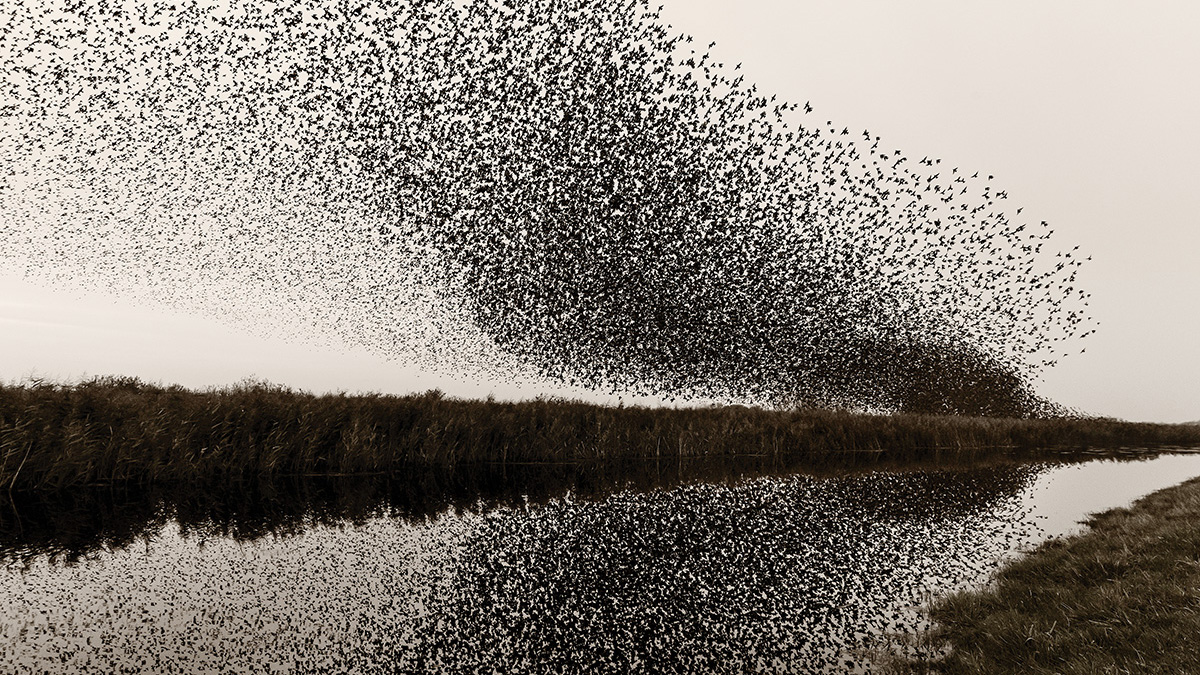Murmuration: Søren Solkær’s Starlings at Sunset
At dusk thousands of starlings moving in unison through the sky, and photographer Søren Solkær is there to chronicle these haunting performances.
• November 2020 issue
It started in the landscape of his childhood, the marshlands of Southern Denmark, says Søren Solkær of his photo project and book, “The Black Sun.” As many as a million starlings gather there in the spring and fall, taking to the sky at dusk in enormous whirling flocks in “one of nature’s most spectacular phenomena,” he says.
Locales: Solkær began in Denmark then moved to other locales—Glastonbury, United Kingdom; Rome, Italy; Friesland province, Netherlands; and Catalonia, Spain—making photographs between October and March. Wanting to photograph the largest gatherings of starlings, Solkær monitored Instagram and other sites for recent photos and then boarded a plane or climbed behind the wheel of his car to reach that locale by the next evening.
Challenges: Photographing in the winter months around sunset meant low light levels. “At the same time I needed a shutter speed of 1/500 second to freeze the movement of the birds,” he explains. “As a result a lot of the photographs have been shot on ISO 4000-8000, which requires a very good camera if you want the files to produce high-end fine art prints.”
Equipment: The photos were made with the Canon EOS-1D X Mark II and the Canon EOS-1D X Mark III cameras with several lenses: Canon EF 24-70mm f/2.8L II USM, Canon EF 100-400mm f/4.5-5.6L IS II USM, and Canon EF 200-400mm f/4L IS USM.
Art: The starlings fly in flocks at dusk and create the illusion of being one unified organism, which protects the birds from predatory threat, he explains. What results is a poetic and beautiful performance that sometimes resembles an ink drawing or a calligraphic brush stroke against the sky, Solkær says. “At times the flock seems to possess the cohesive power of super fluids, changing shape in an endless flux—from geometric to organic, from solid to fluid, from matter to ethereal, from reality to dream.”
Amanda Arnold is associate editor of Professional Photographer.


 View Gallery
View Gallery

